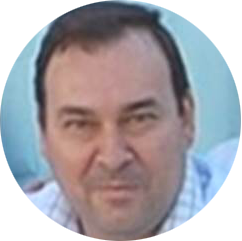
Prenatal testing in Europe comes with its own set of benefits and disadvantages as compared to the United States and other parts of the world. Widespread use of non-invasive prenatal screening has led to a decline in invasive testing, and since samples are more likely to be evaluated locally, rather than a central service, there is a wider range of options for cfDNA testing compared to other parts of the world.
Advances in technology have allowed cell-free DNA testing to move beyond aneuploidy testing to include sub-chromosomal conditions and monogenic disorders, but these tests are far from perfect and still require validation and proper implementation. As these tests become more complicated, costs and additional questions and ethical concerns will also rise. Also on the horizon is the commercialization of cell-based tests with the use of cells isolated from maternal blood; this will create an even more competitive environment and will require greater diligence for proper validation, implementation, and patient education. These are, however, only a few of the challenges in the field of prenatal testing. Much discussion still must be had in regard to preconception counseling, expanded carrier screening, whole genome and whole exome sequencing, and the role any of these tests could play in a decision to continue a pregnancy or perform fetal therapy.
Final Agenda
Day 1 | Day 2 | Download Brochure | Speaker Bios
08:00 Registration and Morning Coffee
09:00 Chairperson’s Remarks
Patrizia Paterlini-Brechot, PhD, MD, Cellular & Molecular Biology, University Paris Descartes, France
09:05 KEYNOTE PRESENTATION: Extending the Scope of Prenatal Diagnosis for Monogenic Disorders: Non-Invasive Prenatal Diagnosis
 Lyn Chitty, PhD, MBBS, MRCOG, Professor, Genetics and Genomic Medicine, UCL Great Ormond Street Institute of Child Health and North-East Thames Regional Genetics Service, Great Ormond Street Hospital for Children NHS Foundation Trust, United Kingdom
Lyn Chitty, PhD, MBBS, MRCOG, Professor, Genetics and Genomic Medicine, UCL Great Ormond Street Institute of Child Health and North-East Thames Regional Genetics Service, Great Ormond Street Hospital for Children NHS Foundation Trust, United Kingdom
Traditional prenatal diagnosis has involved invasive tests. The analysis of cell free DNA in maternal plasma has led to widespread introduction of less invasive testing for aneuploidy, but less so for monogenic disorders. In this presentation I will explain how, in our accredited public service genetics laboratory, we have developed a comprehensive diagnostic service for the non-invasive prenatal diagnosis of monogenic disorders. Such that we now deliver >30% of genetic diagnosis using NIPD and for more than 50 different genetic conditions.
09:35 Non-Invasive Prenatal Diagnosis of Maternally-Inherited Monogenic Disorders by Droplet Digital PCR Combined with Uniformly Most Powerful Likelihood Ratio Test
 Juliette Nectoux, PharmD, PhD, Molecular Genetics, HUPC Hôpital Cochin, France
Juliette Nectoux, PharmD, PhD, Molecular Genetics, HUPC Hôpital Cochin, France
In order to non-invasively identify the fetal status in most cases of maternally-inherited monogenic disorders, we propose a strategy based on iterative collection of plasma samples during pregnancy, followed by droplet digital PCR experiments which allow to accurately quantify the probability for an allele to be mutant. Finally, hypotheses “fetus affected” versus “fetus unaffected” are tested from cumulated experiments using a dedicated statistical model. We study NIPD performance empirically and provide examples from real data to explain how it should be interpreted. This proof-of-concept study of non-invasive droplet-digital PCR technology for the analysis of both paternally and maternally inherited fetal alleles demonstrates that NIPD for single-gene disorders is now becoming achievable.
10:05 Patient-Like Reference Materials to Enable and Accelerate NIPT Assay Validation and Routine Monitoring
 Ram Santhanam, Senior Director, Product Marketing, SeraCare Life Sciences
Ram Santhanam, Senior Director, Product Marketing, SeraCare Life Sciences
As non-invasive prenatal testing (NIPT) expands globally and comes under increased regulatory scrutiny, there is a critical need for patient-like reference materials to accelerate assay development, validation, external quality assurance (EQA) and routine monitoring. We will discuss case studies from a cross section of laboratories successfully utilizing these reference materials.
10:20 Sponsored Presentation (Opportunity Available)
10:35 Grand Opening Coffee Break in the Exhibit Hall with Poster Viewing
11:15 Trends in Non-Invasive Prenatal Diagnosis of Cystic Fibrosis
Claire Guissart, PhD, Laboratory of Genetic Medicine, University of Montpellier, France
Analysis of circulating cell-free fetal DNA (cff-DNA) in maternal plasma is very promising for early diagnosis of monogenic diseases. Several methodological approaches have been developed for NIPD of cystic fibrosis, which is the most common life shortening, childhood onset autosomal recessive disorder in populations of European descent. As we started the translation of our latest noninvasive prenatal diagnosis approach from research into clinical practice, we provide detailed feedback on current cystic fibrosis NIPD clinical practice and prospects.
11:45 Early User Experiences with NIPT: Findings from a Qualitative Study of Private Patients in the UK
 Heather Strange, PhD, Research Associate, Centre for Trials Research, Cardiff University, United Kingdom
Heather Strange, PhD, Research Associate, Centre for Trials Research, Cardiff University, United Kingdom
The UK Department of Health announced plans to integrate NIPT testing into routine prenatal testing in November 2016, and national roll-out is expected to occur in 2018. NIPT testing has been available for pregnant women to access via private prenatal testing services since 2012. Such private testing services are likely therefore to remain in place, and may also expand in size and scope. This work reports on the findings of a small qualitative dataset, generated out of two studies examining NIPT in the UK. This small body of evidence on the private NIPT patient experience is of clear value as it sheds light on early user experiences at a crucial time.
12:15 The Diagnostic Effect of the Introduction of Two NIPT Approaches in a Laboratory Where a Routine SNP Array Is Offered in All Pregnancies
 Malgorzata Srebniak, PhD, Laboratory Specialist in Clinical Genetics, Clinical Genetics, Erasmus Medical Center, The Netherlands
Malgorzata Srebniak, PhD, Laboratory Specialist in Clinical Genetics, Clinical Genetics, Erasmus Medical Center, The Netherlands
After initially applying the genomic SNP chromosomal microarray only in fetuses with ultrasound abnormalities, since July 2012, we routinely performed the SNP array also in cases without fetal ultrasound anomalies where invasive prenatal diagnosis was indicated. In 2013, NIPT became commonly available in Europe which led to a decrease in the number of prenatal invasive procedures. From 2014, NIPT was offered as a second-tier screening test in The Netherlands, when the first trimester combined test showed increased risk for either trisomy 21, 13 or 18. Since April 2017, NIPT is offered as a first-tier screening test. Based on our own regional data, we will show the effect of the genomic SNP array testing and these two NIPT approaches on the diagnostic yield within the last 9 years.
12:45 Enjoy Lunch on Your Own
14:15 Chairperson’s Remarks
Ida Vogel, MD, Head, Clinical Genetics, Aarhus University Hospital, Denmark
14:20 The Importance of Pre-Test Counseling in Aneuploidy Screening by cffDNA: Patients’ Experiences
 Vedran Stefanovic, PhD, Professor, Maternal and Fetal Medicine, Department of Obstetrics and Gynecology, Helsinki University Hospital, Finland
Vedran Stefanovic, PhD, Professor, Maternal and Fetal Medicine, Department of Obstetrics and Gynecology, Helsinki University Hospital, Finland
The unique 95% uptake of first trimester combined and free-of-charge screening in Finland provides cffDNA second-tier screening for all screen-positive women and those with a priority high risk for aneuploidy. Here we present the global overview of pre-test counseling importance in the context of prenatal aneuploidy screening by cffDNA with special emphasis on patients’ experiences and choices in the tertiary teaching university hospital which provides cffDNA screening free of charge for all high-risk pregnancies and personal non-directive counseling. We present our three-year implementation results and the detailed analysis.
14:50 How Fetal Cells in Maternal Blood Change the NIPT Paradigm
 Ripudaman Singh, PhD, COO, ARCEDI Biotech Aps, Denmark
Ripudaman Singh, PhD, COO, ARCEDI Biotech Aps, Denmark
By using a proprietary technology, we have shown that we can isolate fetal cells from every pregnant sample and use the DNA from isolated fetal cells to detect chromosomal and sub-chromosomal changes in the fetal genome. The results from the cbNIPD were verified by the results from chorionic villi sampling. Having performed a preliminary study for implementing our method in a clinical setup, we are in the process of launching a cell-based clinical test in Denmark. In this test, results from the cell-based prenatal analyses on high risk pregnancies will be compared with cell-free non-invasive prenatal testing (cfNIPT).
15:15 Technical Advances for Isolation and Genetic Analysis of Circulating Trophoblastic Cells
 Patrizia Paterlini-Brechot, PhD, MD, Cellular & Molecular Biology, University Paris Descartes, France
Patrizia Paterlini-Brechot, PhD, MD, Cellular & Molecular Biology, University Paris Descartes, France
Circulating fetal cells offer an interesting opportunity to analyze fetal DNA not mixed with maternal DNA aiming to develop a non-invasive approach for prenatal genetic diagnosis (NI-PND). Critical issues for this goal are the number of fetal cells which can be recovered from a blood sample, the purity of cell recovery, the quality of the recovered fetal cells DNA and the assay workflow allowing to develop a high-throughput analysis generating reliable results at a very affordable price. We will show results using the ISET patented method to isolate trophoblastic cells without the use of antibodies and analyze their DNA for non-invasive prenatal diagnosis. We will discuss the different critical issues and the possible solutions in order to bring to the market a new test for NIPND.
15:40 Preeclampsia: Where Is the Progress of the Last Decade?
 Berthold Huppertz, PhD, Professor of Cell Biology, Gottfried Schatz Research Center for Cell Signaling, Metabolism and Aging, Medical University of Graz, Austria
Berthold Huppertz, PhD, Professor of Cell Biology, Gottfried Schatz Research Center for Cell Signaling, Metabolism and Aging, Medical University of Graz, Austria
Preeclampsia has been and still is the syndrome of hypotheses. Much has been discussed and hypothesized, but little has been achieved. The etiology of the syndrome is still in the dark. Also, the identification and use of early predictive biomarkers has not been successful but rather has been hindered by non-scientific movements. Here, a wind of change is needed to succeed in developing treatments to help women suffering from preeclampsia.
16:00 Using Liquid Biopsies and Bioinformatics for Non-Interventional Molecular Recognition of Patients at Risk to Develop Preeclampsia
 Hamutal Meiri, PhD, MBA, Coordinator, International Research, ASPRE Consortium, Israel
Hamutal Meiri, PhD, MBA, Coordinator, International Research, ASPRE Consortium, Israel
The study focuses on the discovery, confirmation and validation of novel biomarkers in a non-interventional manner applying NGS, multiplex PCR and miRNA technologies to determine the biomarkers according to free circulating DNA, RNA, miRNA of maternal plasma, serum and white blood cells along with the use of extracellular vesicles. Bioinformatics enables to link the biomarkers to the underlying pathways thus illuminating the signaling pathways and direct therapeutic treatment.
16:20 Refreshment Break in the Exhibit Hall with Poster Viewing
17:00 Breakout Discussions
Commercialization Challenges for Fetal Cell-Based NIPT
Patrizia Paterlini-Brechot, Ph.D., M.D., Cellular & Molecular Biology, University Paris Descartes, France
- What are the scientific and technical roadblocks to developing a commercial cell-based NIPT?
- What are the competitive requirements and expected benefit ?
- What are the insurance and/or regulatory barriers?
- What are the clinical implications for when a cell-based NIPT is commercialized?
The Role of Exomes in Prenatal Diagnostics
Ida Vogel, MD, Head of Clinical Genetics, Aarhus University Hospital, Denmark
- When in a pregnancy should we use exome sequencing in prenatal diagnostics?
- Who should take advantage of exome sequencing?
- What are the challenges and barriers to using WES more often? What are the ethical concerns?
18:00 Welcome Reception in the Exhibit Hall with Poster Viewing
19:00 Close of Day
Day 1 | Day 2 | Download Brochure | Speaker Bios
WEDNESDAY, 23 MAY
08:00 Registration and Morning Coffee
09:00 Chairperson’s Remarks
Malgorzata Srebniak, PhD, Laboratory Specialist in Clinical Genetics, Clinical Genetics, Erasmus Medical Center, The Netherlands
09:05 Using Exomes in Prenatal Diagnostics
 Ida Vogel, MD, Head of Clinical Genetics, Aarhus University Hospital, Denmark
Ida Vogel, MD, Head of Clinical Genetics, Aarhus University Hospital, Denmark
Over the last two years, we have gradually implemented WES in pregnancy – first on terminated pregnancies and now also in ongoing. 44 % fetal exomes (trio) provided a diagnosis for the fetus in cases not solved by CMA. Thus, WES analysis can reveal an unexpected diagnosis and thereby completely alter the premises for decision-making regarding current and future pregnancies – now based on a specific diagnosis and knowledge of recurrence risk. Moreover, utilizing WES in the third trimester can provide a diagnosis and may substantially improve the treatment plan for the neonate in a non-acute setting.
09:35 Array-CGH as a First-Tier Test in All Invasive Prenatal Samples: A Year of Experience
 Julian Nevado, PhD, Responsible for Genomics and Quality Manager, INGEMM, Spain
Julian Nevado, PhD, Responsible for Genomics and Quality Manager, INGEMM, Spain
In a moment with prevalence of NIPD testing in the prenatal diagnosis, what should we do with the invasive prenatal samples? Based on our experience and current data, we will try to recommend our best option for a complete genetic prenatal diagnosis.
10:05 Ethics of NIPT Whole Genome Tests
 Francois Jacquemard, PhD, Gynecology & Obstetrics, American Hospital of Paris, France
Francois Jacquemard, PhD, Gynecology & Obstetrics, American Hospital of Paris, France
This talk will examine a number of ethical issues related to whole genome NIPT tests, including when to use this type of testing, how to analyze and present the information to patients, and the role of genetic counseling. This talk will also examine different perspectives across Europe.
10:35 PANEL DISCUSSION: The Future Potential of Whole Exome Sequencing
Ida Vogel, MD, Head of Clinical Genetics, Aarhus University Hospital, Denmark
Julian Nevado, PhD, Responsible for Genomics and Quality Manager, INGEMM, Spain
Francois Jacquemard, PhD, Gynecology & Obstetrics, American Hospital of Paris, France
11:05 Coffee Break in the Exhibit Hall with Poster Viewing
11:35 Plenary Introduction
 John Carrano, CEO, Paratus Diagnostics, LLC, United States
John Carrano, CEO, Paratus Diagnostics, LLC, United States
11:45-12:15 The New EU IVD Regulation – What Will It Mean for Your Lab?
 David E. Barton, PhD, Chief Molecular Geneticist, National Centre for Medical Genetics, Our Lady’s Hospital for Sick Children, Ireland
David E. Barton, PhD, Chief Molecular Geneticist, National Centre for Medical Genetics, Our Lady’s Hospital for Sick Children, Ireland
In May 2017, Europe passed a new Regulation on in vitro Diagnostic Devices (IVDs). The regulation sets up a framework for controlling the market for diagnostic tests within the EU, setting out standards for the design and manufacture of in-vitro diagnostic devices (IVDs) and providing mechanisms for the oversight of these standards. This presentation will outline the content of the new regulations, with a particular focus on molecular diagnostics, and highlight the new requirements for clinical laboratories.
12:15-12:25 Introduction: Medicinal Product Regulators Point of View: Scientific-Regulatory Aspects of Companion Diagnostics and Challenges for Validation during Clinical Co-Development (Quality-Related Aspects)
 Jörg Engelbergs, PhD, Scientific Expert and Assessor Biomedicines (Quality, Non-Clinic & Personalized Medicine), Section Mono- and Polyclonal Antibodies, Paul-Ehrlich-Institut, Federal Institute for Vaccines and Biomedicines, Germany
Jörg Engelbergs, PhD, Scientific Expert and Assessor Biomedicines (Quality, Non-Clinic & Personalized Medicine), Section Mono- and Polyclonal Antibodies, Paul-Ehrlich-Institut, Federal Institute for Vaccines and Biomedicines, Germany
In Europe, the legislation for marketing of medicinal products (MP) and IVDs including predictive biomarker-based assays (Companion Diagnostics, CDx) are not directly linked which is challenging for co-development. The new IVDD involves MP regulators in the CDx review process for CE marking. This presentation will outline from the perspective of MP regulators the scientific-regulatory challenges for technical validation of CDx. Differences between exploratory assays and assays used for patient stratification, as well as aspects for complex assays will be addressed.
12:25-13:30 PANEL DISCUSSION: Changing Landscape for IVDs in the EU
Moderator:
 Charlotte Ryckman, Covington & Burling LLP, Belgium
Charlotte Ryckman, Covington & Burling LLP, Belgium
Panelists:
 David E. Barton, PhD, Chief Molecular Geneticist, National Centre for Medical Genetics, Our Lady’s Hospital for Sick Children, Ireland
David E. Barton, PhD, Chief Molecular Geneticist, National Centre for Medical Genetics, Our Lady’s Hospital for Sick Children, Ireland
 Jörg Engelbergs, PhD, Section Mono- and Polyclonal Antibodies, Scientific Expert Biomedicines, Quality, Non-Clinic & Personalized Medicine (Biomarker/CDx), Paul-Ehrlich-Institut, Federal Institute for Vaccines and Biomedicines, Germany
Jörg Engelbergs, PhD, Section Mono- and Polyclonal Antibodies, Scientific Expert Biomedicines, Quality, Non-Clinic & Personalized Medicine (Biomarker/CDx), Paul-Ehrlich-Institut, Federal Institute for Vaccines and Biomedicines, Germany
 Maria Judite Neves, Health Products Director, Health Products Directorate, INFARMED – National Authority of Medicines and Health Products, Portugal
Maria Judite Neves, Health Products Director, Health Products Directorate, INFARMED – National Authority of Medicines and Health Products, Portugal
 Sue Spencer, Global Service Director, Regulatory, UL, United Kingdom
Sue Spencer, Global Service Director, Regulatory, UL, United Kingdom
 Andreas F. Stange, PhD, Vice President, MHS Global IVD, TÜV SÜD, Germany
Andreas F. Stange, PhD, Vice President, MHS Global IVD, TÜV SÜD, Germany
 Doris-Ann Williams, MBE, Chief Executive, British In Vitro Diagnostics Association (BIVDA), United Kingdom
Doris-Ann Williams, MBE, Chief Executive, British In Vitro Diagnostics Association (BIVDA), United Kingdom
- Practical impact of the new IVD Regulation
- Regulatory aspects of companion diagnostics
- Challenges for validation
- Role of IVDs in the market
13:30 Close of Advances in Prenatal Molecular Diagnostics
Day 1 | Day 2 | Download Brochure | Speaker Bios